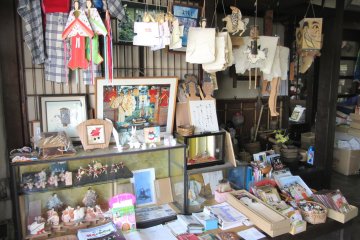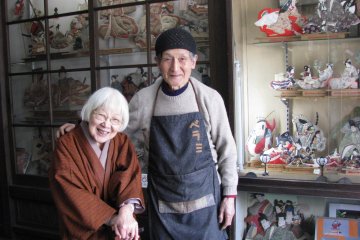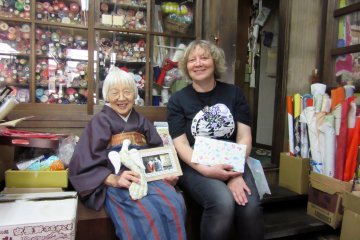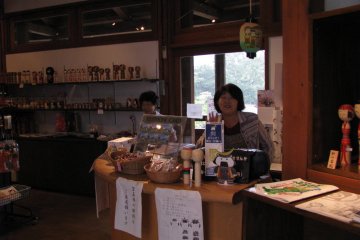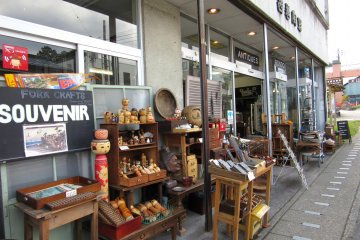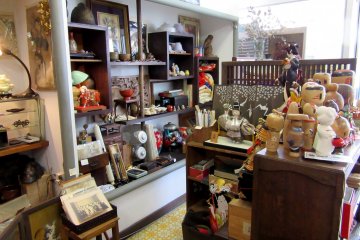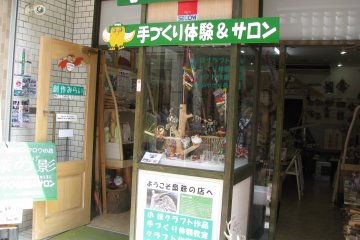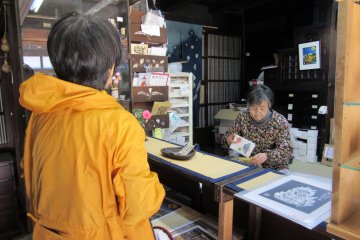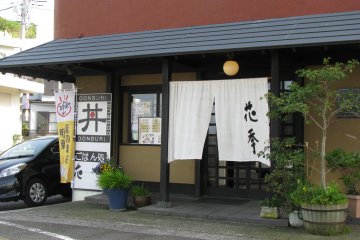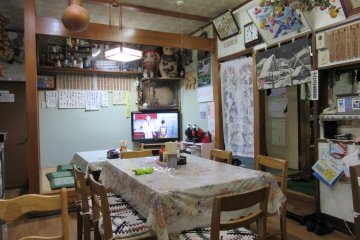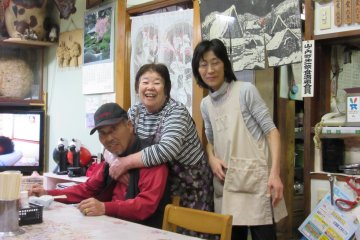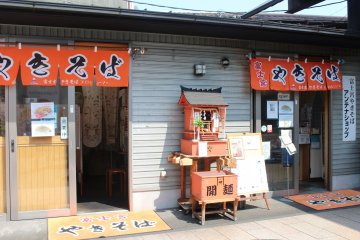There is an enormous number of shops across Japan, and at these shops, customers are greeted with polite attention. My favorite are small shops usually run by an owner or a family selling special goods. In such shops, I could take my time and talk with the owners who explained their products to me and helped me make a choice.
On my very first trip to Japan I visited Yajiro Kokeshi Mura – a place that contained a small kokeshi museum, a gift shop, and a few workshops where masters made kokeshi dolls. The shop had a great choice of dolls and the owners helped me to choose the best ones. Since the price for each kokeshi doll was very reasonable – about 1000 to 2000 yen for a piece – I picked 7 or 8, and got one as a present!
I made a very special bond with the owners of the shop Bell Ami, in Matsumoto. The shop doubles as a studio where the owners, the Mimura family, have produced paper and cloth dolls in the oshie technique since the 1950s. Besides various dolls displayed in glass cases, the shop is full of interesting items such as pictures, patterns, Japanese silk, small souvenirs, and so forth. There is also a great collection of antique oshie dolls collected by the Mimura Family. Since I was the very first doll artist to visit from Russia, they were interested to talk to me with the help of my Japanese friend. I purchased some dolls and took a photo of the owners who were happy to meet me. Three years later, I visited the shop again with some gifts and found that Mimura-san had passed away. His wife Kazuko-san remembered me and was happy with my gifts. The shop is still run by their son and his wife.

Another small shop I remember is Rondo Antique in Nikko. On the day of my visit, some old kokeshi dolls were displayed outside. I was interested and went inside the shop where I found a great number of really good old dolls and other items for very reasonable prices! It took me about an hour to choose, and the owner was very patient and nice. As I was the only customer, she talked to me and then went out to see me off. Another nice owner I met was Nakamura-san – the owner of a small workshop in Ito. He was a wood master and used to give classes to kids. We could talk and he kindly signed two of his works purchased by me.

Small art galleries are quite common in Japan, and I was connected with one such gallery – Arabiq in Osaka. It is a place where customers can read books and view pieces of art such as paintings, artist dolls and other collectibles. The owner of Arabiq also suggests drinks – tea, coffee, beer, or stronger drinks. The atmosphere of Arabiq is home-like and comfortable. I visited that gallery twice and was well received by the owner. I’d like to visit such a place often if there was one nearby.

Besides shops, I also like restaurants in small places. After many years I still remember the hospitality of one restaurant in Ito, where the owners tried their best to make conversation and ensured I enjoyed their food. In Yudanaka I went to the same restaurant every evening and the owners already recognized me and greeted me happily. On my last evening they gave me sweets – it was very nice!

Such communication seems possible only in small towns – in big cities it doesn’t feel the same.







